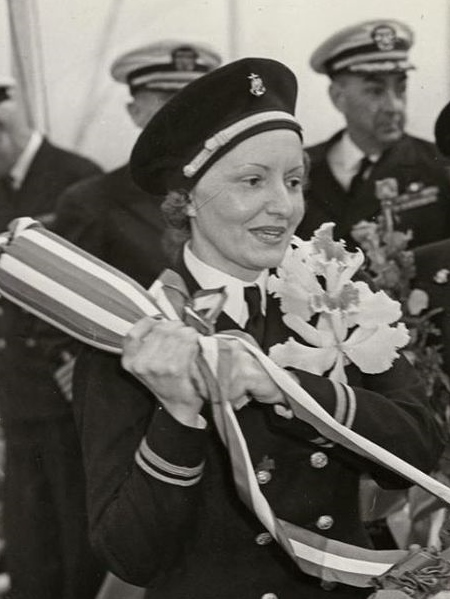YETTER-DORIS
DORIS MARGARET YETTER

CDR (NC)

World War II began at Guam on December 8, 1941(the island is located west of the International Date Line). At 8:27 AM a flight of Japanese planes attacked the U.S. military facilities on Guam. The U.S. Government had decided that in case of war it would not be possible or practical to defend Guam if it was attacked and thus there were meager U.S. forces on the island which consisted of only one minesweeper and about 540 personnel including a Marine contingent of 145 men. The Marines were equipped with only 170 World War I rifles, not enough for each man, and a small number of machine guns and no mortars or artillery. Thus, on December 10, two days after the war began, when Japanese forces estimated to number about 5,900 men invaded the island, the resistance to the invaders was fierce but short lived as the Japanese quickly overwhelmed the defending troops and the minesweeper was sunk.
LTJG Doris Margaret Yetter was one of five Navy nurses assigned to the Guam medical facilities. The nurses remained calm during the Japanese attack, going about their regular duties. They later reported that there wasn’t time to huddle in a ditch even when the hospital was being machine gunned. Thus, on the third day of World War II the nurses watched as their country’s flag came down and they knew they were prisoners. For a month the nurses were allowed to remain in their quarters and continue their duties as if being a prisoner was an everyday occurrence. But, Japanese solders ate their food and wandered at will through the hospital and nurse quarters, picking up whatever struck their fancy.
After a period of confinement on Guam the five nurses were transported to Japan and housed for several months at Zentsuji POW Camp in Osaka. Here they slept on straw mats on the floor and endured the freezing cold with nothing but an inadequate stove for heating. Their daily food ration was a small loaf of bread, rice and unpalatable soup. They were next moved to Kobe where they were housed in the Eastern Lodge which was described as a “fifth rate Westernized style hotel” which had been converted to hold POWs. Here the captives reportedly continued to consume an unappetizing “weed and water” soup and a rice-wheat mixture. While housed at Kobe the Japanese tried to persuade the women that there was no longer a U.S. military, but the women refused to believe them and were excited when they saw one of the Doolittle Raid planes with American markings fly over the city. As one nurse said, “The sight of that plane made us want to get out more than ever, to get back to our own Navy where we could do some good.”
In August 1942, LTJG Yetter, with the other four nurses captured on Guam, was repatriated in an exchange of United States/Canada nationals for Japanese/German nationals. The group boarded the ASAMA MARU in Yokohama on June 25, 1942. At Mozambique they were exchanged and boarded the MS GRIPSHOLM being operated under the auspices of the International Red Cross which transported the repatriates to New York City where they arrived on August 25, 1942. It has been reported that this small group of five Navy nurses was the only American POWs captured at Guam that were ever repatriated, and that all other military and civilian prisoners from Guam remained in Japan for the duration of the war until released in 1945.
Doris Margaret Yetter was born on October 1, 1909, in Philadelphia, Pennsylvania. She joined the Navy in March 1938 as a nurse and was assigned to duty at Guam. Following her 1942 release from Japanese captivity LTJG Yetter was honored on March 25, 1943, to be the Ship’s Sponsor and broke a bottle of champagne on the ship’s bow at the launching ceremony of the hospital ship USS MERCY (AH-9) in Wilmington, California. Public records do not detail her later Navy assignments although there is an indication she was the Chief Nurse at Mare Island in 1955. After her discharge from the Navy with the rank of Commander she reportedly settled in San Francisco where she died on September 2, 1997.
Submitted by CDR Roy A. Mosteller, USNR (Ret)

